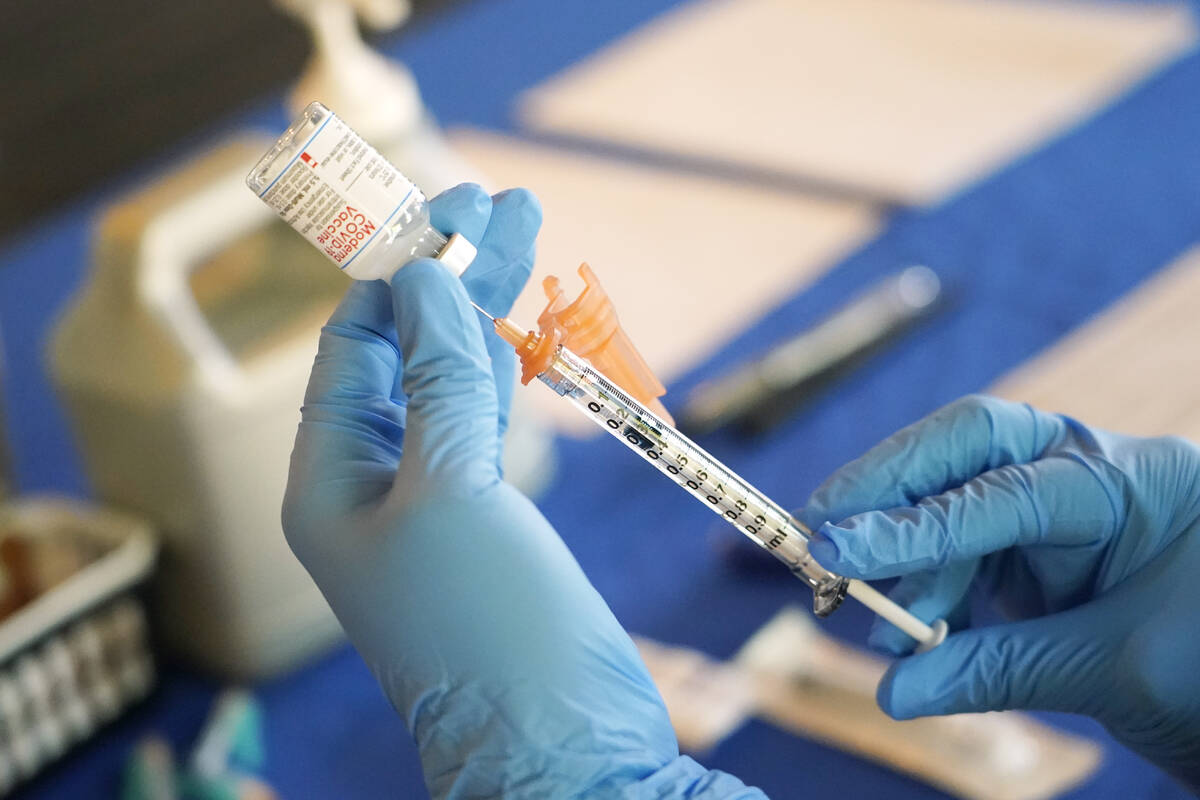New COVID variant not in Southern Nevada yet, wastewater data shows
COVID-19’s new variant has yet to show up in Southern Nevada, according to the latest wastewater data.
An omicron subvariant, BA.2.86, is the most recently discovered subvariant of COVID-19, with nine cases reported worldwide as of last week, according to the Centers for Disease Control. Two of those cases were reported in the United States.
The CDC’s risk assessment of the new variant from last Wednesday did not confirm whether the new strain would cause more severe symptoms or spread more easily than previous versions of the virus.
The assessment did highlight that the subvariant has more genetic mutations than the other omicron subvariants that came before. It compared the level of mutation found in BA.2.86 to the first version of omicron and earlier variants of COVID-19, like the Delta variant.
The CDC said the higher level of mutation could mean BA.2.86 may get past existing immunity more often than the subvariants that came before it, but this was still being investigated as of last week.
Updated COVID-19 vaccines should reduce severe symptoms and hospitalizations, according to the CDC’s current assessment, but scientists are still evaluating that claim for BA.2.86. The CDC said the updated vaccines could be available as early as mid-September if authorized by the Food and Drug Administration.
The new variant’s presence in multiple countries shows that it spread internationally, the CDC said, and may have been spreading undetected because of less genome sequencing of COVID-19 recently than in the last couple of years. Wastewater samples in the U.S. found that BA.2.86 is present in the country beyond the first two documented cases.
But Southern Nevada’s wastewater has not yet seen the subvariant, according to Edwin Oh, a researcher and associate professor at UNLV’s Kirk Kerkorian School of Medicine.
“There is no data to support the idea that BA.2.86 is present in Southern Nevada as of last Wednesday,” Oh said Tuesday.
According to Oh, the variant has not shown up in the region’s wastewater, which means the variant is not responsible for the spike in COVID-19 cases earlier this month.
Another recent COVID-19 variant, EG.5, also known as “Eris,” has been the dominant strain recently, at least up until last week, Oh said.
A spike in COVID-19 cases lines up with the trends from the last two years, with more cases popping up around the time people would be returning from summer travels and going back to school, according to Oh.
COVID cases spiked in November around Thanksgiving and stayed high through the end of the last two years, after coming down from the small spikes in August, according to Oh.
While the variant hasn’t been found in Southern Nevada, that doesn’t mean it won’t get here eventually, Oh said.
“Now, I’m not saying that we shouldn’t have any concern, but I think it needs to be measured,” he said. “We need to ask ourselves, ‘Up to this point, as of last week, has this new variant been causing this new increase in cases?’ And the clear answer for us is no. Is it going to change here in the next month? We’re going to find out.”
Contact Mark Credico at mcredico@reviewjournal.com. Follow him on Instagram @writermark2.

















